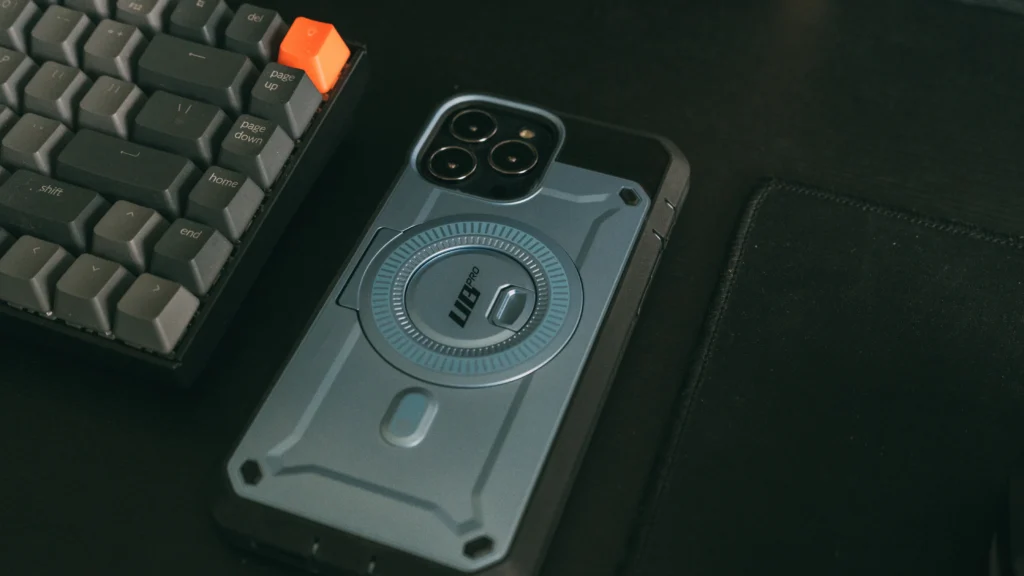For years, smartphone rugged Cases have served a valuable purpose, adding much-needed protection to delicate devices. But today, most smartphones are built to withstand the wear and tear of daily life without needing bulky cases. As manufacturers continue to improve smartphone durability, rugged cases may not be as necessary as they once were. Here’s a closer look at why rugged cases for smartphones no longer make sense for the average user.
1. Modern Smartphones Are Built to Be Durable
Smartphone makers now design their devices with durability in mind, using high-quality materials that help them withstand everyday accidents. Today’s premium smartphones come equipped with features like Corning’s Gorilla Glass, ceramic shields, and reinforced metal frames made from materials such as aluminum and even titanium. These advancements mean that high-end smartphones are often built to survive drops, scrapes, and other accidents that would have caused damage just a few years ago.

In addition to being tough, many smartphones are also water-resistant. Most flagship models now come with IP68 ratings, which certify that they’re dustproof and can survive being submerged in water up to 1.5 meters for as long as 30 minutes. This level of protection eliminates the need for extra layers like those found in rugged cases. With built-in water and dust resistance, along with materials that can handle accidental drops, many modern smartphones are well-equipped to endure most hazards without the need for a rugged case.
2. Rugged Cases Make Smartphones Bulky and Less Convenient
One of the biggest downsides of rugged cases is the additional bulk they add to a device. When you add a heavy-duty case to your smartphone, it nearly doubles in thickness, making it harder to carry and handle. A rugged case can also increase the weight of a smartphone significantly, which can be particularly noticeable with flagship models that are already quite heavy on their own. Premium phones often weigh over 200 grams, and adding a rugged case on top of that can make them feel like bricks in your pocket or bag.
A sleek smartphone design is part of what makes modern devices appealing, especially since manufacturers put so much effort into creating visually attractive devices with a slim, elegant profile. By covering up a premium phone with a rugged case, you lose the ability to enjoy the design of your device. For many users, this defeats the purpose of investing in a stylish smartphone.

Some people argue that rugged cases help keep devices in pristine condition, which can aid resale value. While there’s some truth to this, most people don’t consider resale value a major factor in their decision to buy a rugged case. In reality, a slim case with basic protection often provides enough security to prevent scratches and minor dents while allowing users to still enjoy the look and feel of their smartphone.
3. When Rugged Cases Do Make Sense
While rugged cases may not be necessary for the majority of users, there are specific situations where they can be useful. If you work in a demanding environment—such as construction, landscaping, or any job where your phone is exposed to rough conditions—a rugged case can provide an added layer of security. These cases are also ideal for people who spend a lot of time outdoors, especially in rugged environments, where a phone might be dropped on rocks or in the mud.
For individuals who are particularly accident-prone or frequently drop their phones, a rugged case could also be a reasonable choice. If you tend to have “butterfingers” and often find yourself accidentally letting your phone slip from your hands, you might benefit from the extra protection. However, for most people who occasionally drop their phones, a standard case with basic drop protection is usually sufficient to prevent significant damage.
4. Better Alternatives for Everyday Protection
For everyday use, a slim, lightweight case can provide all the protection most people need. Slim cases offer a balance between protection and aesthetics, often featuring shock-absorbing materials that help prevent damage from minor drops and bumps. These cases allow users to enjoy the design of their smartphone without sacrificing security. Additionally, lightweight cases are often more affordable and don’t add the bulk that makes a smartphone harder to carry or use.

Screen protectors are another simple solution to prevent scratches and cracks on your device’s display. Many people find that a slim case combined with a high-quality screen protector offers enough protection to keep a smartphone looking new without the added bulk of a rugged case.
5. Conclusion: Rethinking the Need for Rugged Cases
Rugged cases served a practical purpose in the past when smartphones were more fragile and lacked the durability features of today’s models. But as manufacturers have improved the strength and resilience of smartphones, these cases have become less essential for everyday users. A bulky rugged case may still be worthwhile for those who work in challenging environments or are particularly prone to dropping their devices. However, for most people, a lighter, slimmer case can offer adequate protection while allowing them to enjoy their smartphone’s design and feel.
In the end, it’s all about personal preference and lifestyle. But if you find yourself reaching for a rugged case “just in case,” it might be worth reconsidering. Modern smartphones are engineered to withstand daily life, and a simple case could provide the best combination of protection and style. So, unless you’re heading out into extreme conditions, a rugged case may not be as necessary as it once was.






